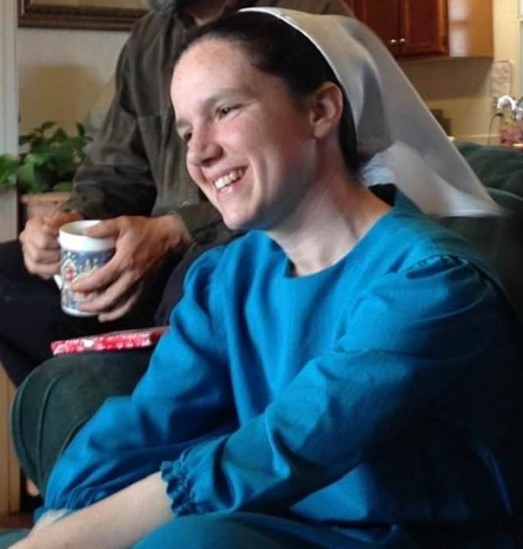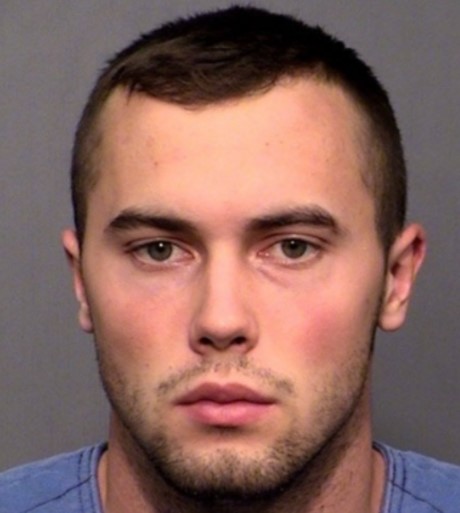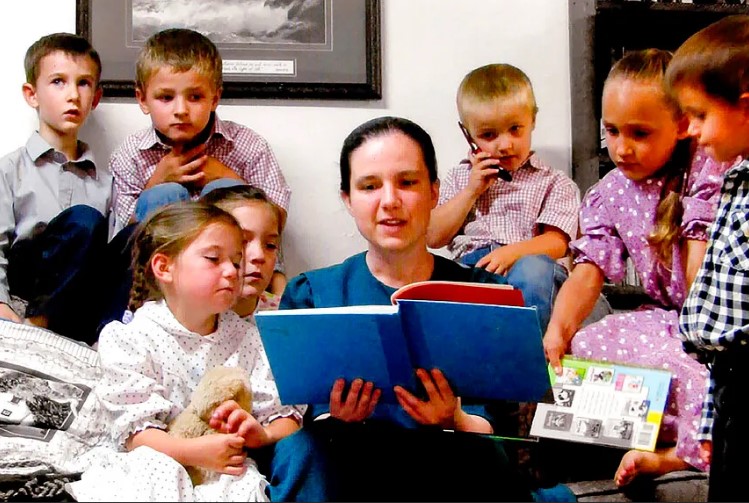
Flagstaff, Arizona. A camper found Sasha Krause’s body in Coconino National Forest, a month after the 27-year-old was reported missing from her Mennonite community in New Mexico. Her wrists were bound, and she was lying face down.
On the evening of January 18, 2020, Sasha drove to the nearby church to retrieve materials for Bible Study. After several hours, Sasha’s roommates noticed she had not returned home. Her bedroom door was open, and the light was still on. She was not answering her phone. Even though they had a curfew, the roommates went outside to look for Sasha. They found her car in the church parking lot. They contacted their church leader. Elders searched the compound for two hours, but there was no sign of her.
They called the police and reported her missing. When investigators arrived, they found Sasha’s keys in her unlocked car and observed no signs of a struggle. They found her purse, credit cards, cash, handwritten journals, notebooks, and other personal items in her bedroom. However, her flip phone was missing.
Everyone was baffled by her disappearance. Her family was notified. An exhaustive search for Sasha ensued in the rural community, with investigators releasing a missing person bulletin on their social media account. Police conducted interviews, but no one had seen her.
A Missing Person Reward was offered. The San Juan County Sheriff’s Office reported that Sasha was last seen leaving her residence around 8 p.m. and never returned. Her disappearance was suspicious.
On February 21, 2020, over a month later, a camper discovered Sasha’s body in the Coconino National Forest near Flagstaff, Arizona. When investigators arrived, they found Sasha lying face down, fully clothed, with her hands bound in duct tape. Investigators never located Sasha’s underwear or head covering.
A medical examiner would later determine that Sasha suffered blunt force trauma and a single gunshot wound to the back of her head. The medical examiner located the bullet near the back of Sasha’s jawline.
Why Would Anyone Want to Murder Sasha Krause?
With no lead suspects, a GeoLocation expert began reviewing data from the three cellular phone sites positioned between Farmington and the location of Sasha’s body on the relevant dates. The only phone that connected to all three cell sites belonged to Mark Gooch.
The data showed that Gooch traveled to Farmington near the Mennonite church, left around the time of Sasha’s abduction, and stopped for over two hours near the location of her body. In comparing data from Sasha’s phone, investigators found that she traveled the same route as Gooch until her phone stopped connecting to cell sites near the New Mexico/Arizona border. After leaving the area near Sasha’s body, Gooch traveled back to a military base near Phoenix, Arizona. The data also revealed that, days later, Gooch returned to the location of Sasha’s body before driving back to the military base.
Investigators learned that Mark Gooch, an aircraft mechanic, lived at the military base in January and February 2020. Raised and educated in a Mennonite community, Gooch refused to be baptized and eventually stopped participating in church services. Contrary to Mennonite doctrine, which requires pacifism, after Gooch received his GED, he joined the military. Those close to Gooch knew he harbored resentment for the Mennonite church.
In the week before Sasha’s abduction, phone records revealed that Gooch spoke with one of his brothers about conducting surveillance of Mennonite communities in the area. He noted that surveillance of communities in the Phoenix area had been another disappointment, and “taking risks was back at zero.” Cell-site data from this day confirmed that Gooch visited multiple Mennonite communities in the Phoenix area.
In a later conversation, Gooch and his brother exchanged text messages with their brother. Their brother, a police officer, joked that he had given a Mennonite driver a ticket and had “coughed on him so he would spread Corona.” Responding with excitement, Gooch said he found it “fucking hilarious” and hoped he “treated ’em like shit.” He was relishing in the suffering of a man he did not even know. That’s what he did with Krause, the prosecutors said. (Jacob Gooch resigned over the text.)
On the day of Sasha’s abduction, video and gate entry data from the military base confirmed that Mark Gooch left the Air Force base that morning and returned the following morning. When Gooch returned, a surveillance video showed him carrying a plastic bag inside his residence and later discarding a similar-looking bag in a dumpster.
As Sasha’s abduction became public, phone records showed that Gooch repeatedly visited her missing person bulletin on social media.
The day after investigators located Sasha’s body, Gooch had his car professionally detailed and paid extra for complete interior cleaning. Gooch exchanged text messages with his brother Samuel, who suggested that he have them spray down the car with disinfectant. The same day, Mark Gooch bought a bottle of bleach from the military base commissary and asked if a co-worker could store his .22 caliber rifle. Gooch stored the rifle, along with .22-caliber ammunition, in the co-worker’s safe. Gooch also submitted multiple requests to delete his location history in January and February 2020.
After Gooch’s arrest, his co-worker provided the rifle and ammunition to investigators. A ballistics expert concluded that Gooch’s rifle fired the bullet used to kill Sasha. Gooch’s expert would later disagree, claiming an analysis yielded inconclusive results. Investigators searched Gooch’s car, which was exceptionally clean, and located a pair of binoculars and a box of nitrile gloves. They also learned that surveillance camera video from the Farmington Mennonite community on the day of Sasha’s abduction captured what appeared to be Gooch’s car. While in custody awaiting trial, Gooch contacted Samuel and asked him to wipe his phone remotely.
In an interview with the lead investigator, Mark Gooch gave several inconsistent statements, ultimately claiming he traveled to Farmington to attend a church service because he knew members from that community. Investigators found no evidence Gooch knew anyone in that community or still attended Mennonite church services. He denied stopping anywhere near the Coconino National Forest on his return to the military base. The evidence contradicted much of law enforcement’s data-driven timeline of Gooch’s movements.

Mark Gooch, 22, kidnapped Sasha Krause, 27, from her community near Farmington, New Mexico, in January 2020 and brought her to a forest clearing outside Flagstaff, Arizona, authorities said. At some point, he had bound her wrists. Gooch bashed her head with his rifle and then shot the victim in the back of the head, Prosecutor Ammon Barker told jurors in closing arguments.
This contempt flew in the face of his statements to law enforcement about why he was in Farmington, Barker said. He claimed he was there because he missed the Mennonite community and wanted to join a church. Gooch was not a mastermind, however, Barker said. He failed to cover up the evidence and told lies that did not hold up to scrutiny. For example, he claimed to have “swung by” a Mennonite church one afternoon to check out service times, but in truth, he was there for three hours and 31 minutes, Barker said.
Gooch had written another brother, Sam Gooch, that he was doing “surveillance” but only found older people, who, in his words, did not have “much to live for.” This was proof he was in Flagstaff on January 12, 2020, six days before Krause went missing, said Barker.
He tried and failed to hide his tracks in the Krause murder, but deleting his Google account information did not touch AT&T records, Barker said. Cell phone evidence approximated his presence at the kidnapping site in New Mexico and the murder site in Arizona, and it also helped catch Gooch in his lies, according to the State.
The State charged Gooch with one count each of first-degree murder, kidnapping, and misdemeanor theft, alleging alternate theories of pre-meditated and felony murder.

During the 12-day jury trial, Mark Gooch moved for a judgment of acquittal under Arizona Rule of Criminal Procedure Rule 20 for the misdemeanor theft offense, arguing the State failed to show Sasha was wearing a head covering and underwear at the time of her abduction. The Superior Court denied the motion, finding the State presented sufficient circumstantial evidence of theft.
The jury found Gooch guilty of first-degree murder and kidnapping. Eleven jurors found both pre-meditated and felony murder, and one juror found only felony murder.
At Gooch’s request, the Superior Court rendered the verdict as to misdemeanor theft and found him guilty of the offense. The court sentenced Gooch to natural life for first-degree murder, a consecutive term of five years imprisonment for kidnapping, and time served for misdemeanor theft. Gooch timely appealed.
State of Arizona v. Mark Daniel Gooch

Court of Appeals of Arizona
Gooch argues the cumulative effect of multiple alleged instances of prosecutorial error deprived him of his right to a fair trial. Specifically, Gooch contends that the prosecutor improperly (1) emphasized a “stark moral contrast” between him and the victim, (2) commented on his veracity and vouched for the truth of the State’s evidence, and (3) impugned the role of defense counsel in a criminal case.
From the outset of the trial, the Prosecutor and Defense Counsel referred to relevant tenets of the Mennonite faith. As early as opening statements, the prosecutor and defense counsel used Mennonite customs to present their theories of the case. The prosecutor used the Mennonite way of life to provide narrative context for Sasha’s abduction, presenting Gooch’s resentment of the church as a likely motive. In contrast, defense counsel stated that Gooch’s values were rooted in his upbringing in the Mennonite faith, and the evidence would reveal him to be “a peaceful, nonviolent person.”
Both sides examined these topics throughout the trial with permissible rationales. The prosecutor elicited testimony to explain why there was no sign of a struggle: Sasha’s adherence to a doctrine of non-resistance. He also elicited testimony about customary dress under Mennonite teachings of modesty to show that Sasha was most likely wearing items that were taken by Gooch to support the theft charge. The prosecutor also elicited testimony about the Mennonite doctrine to rebut the defense counsel’s inference that someone in the Mennonite community committed the offenses.
Defense counsel called Gooch’s father to testify about his son’s upbringing in the Mennonite faith and Gooch’s exposure to its emphasis on pacifism as evidence of Gooch’s peaceful, nonviolent character. While Gooch’s father conceded that his son ultimately refused baptism in the church, he testified that Gooch was raised to be nonviolent. When expressly asked about Gooch’s “reputation for being a peaceful, nonviolent person,” his father avowed that he never observed his son engage in violent behavior.
On direct examination, Gooch’s father also testified that, in his opinion, Gooch “wasn’t of a converted heart” and, therefore, did not feel a need to keep attending services. In cross-examination, the prosecutor asked Gooch’s father to expand on the meaning of “a converted heart,” he responded that his son “had not yet turned from darkness to light.”
During direct examination, the prosecutor asked the lead investigator to walk the jury through Gooch’s interview and break down each time he provided an inconsistent or inaccurate fact. The prosecutor employed a pattern of describing what Gooch said, then asking what the evidence “actually” demonstrated. When asked if Gooch denied traveling back to the area near Sasha’s body, the investigator responded that “he wasn’t being truthful during that interview” because the evidence showed he returned to the area in February.
In cross-examination, defense counsel highlighted consistencies in Gooch’s statements and the investigator’s use of misleading interviewing tactics. The prosecutor’s closing argument underscored problems with Gooch’s timeline, contending that the evidence “brought to light” the truth. Defense counsel countered that Gooch, who maintained a polite and cooperative demeanor in the interview, had been manipulated by the investigator’s interviewing tactics.”
Gooch contends that the prosecutor committed an error by misstating the pre-meditation standard in the closing argument. Because pre-meditation had been a central issue at trial, the misstatement of law could not be viewed as a “triviality.”
The prosecutor’s closing remarks focused heavily on evidence that Gooch conducted surveillance of Mennonite communities, harbored resentment for the church, waited to abduct Sasha, bound her wrists, and drove a long distance to commit and conceal the murder. The prosecutor noted, in rebuttal, that there was no “dispute” as to premeditation because Gooch’s defense involved a blanket denial. Without objection, the prosecutor then argued that premeditation does not require the defendant have “some plan written down on a napkin somewhere or that he has some kind of plan to kill [Sasha], in particular. What we do know is that the defendant abducted her from her community and took her to a faraway location, a remote location of his choosing, where he killed her. And that’s pre-meditated murder; shooting somebody in the back of the head with intent is pre-meditated murder.” In the final jury instructions, the superior court instructed the jury that premeditation required proof that Gooch intended to kill Sasha and he “reflected on the decision before killing” her.
The prosecutor focused on the prolonged series of events, including the time Gooch took to surveil, abduct, and subdue his murder victim.
The prosecutor’s brief discussion of premeditation did not prejudice Gooch’s ability to present his chosen defense or prevent him from receiving a fair trial.
Gooch further contends that, absent the alleged error, the jury would not have returned eleven votes for premeditation, a fact he argues influenced the superior court’s sentencing decision. We find nothing in the record to support this claim. The jury reached a unanimous verdict as to felony murder, giving the court authority to impose either natural life or life with the possibility of release.
An Airman will spend the rest of his life behind bars after an Arizona judge sentenced him for the kidnapping and first-degree murder of Sasha Krause.
Airman 1st Class Mark Gooch, 22, formerly assigned to the 56th Equipment Maintenance Squadron, Luke Air Force Base, Arizona, was given a life sentence without the possibility of parole following a guilty conviction.
On April 15, 2020, during the early stages of the murder investigation, Gooch was named as a person of interest by the Coconino County Sheriff’s Office in Flagstaff, Arizona, after the victim’s body was discovered in a nearby forest.
Over 300 miles away, the victim had already been reported missing from her Farmington, New Mexico, community. On Jan. 18, 2020, the San Juan County Sheriff’s Office started their search for the victim.
Law enforcement agents from New Mexico and Arizona teamed with Office of Special Investigations Detachment 421 at Luke AFB in a joint investigation, joined by the nearby Glendale Police Department outside of Phoenix.
From April 15 to 21, 2020, Detachment 421 observed Gooch’s activities on base while the Arizona detectives monitored his off-base activities. By April 21, Gooch was brought in for an initial interview regarding the incident.
Despite Gooch’s efforts to mislead authorities, he was arrested that month.
Investigators also uncovered video footage, cell phone data, and other pertinent information indicating Gooch lied during the April 21 interview.
Together with the Glendale authorities, the Det. 421 special agents searched Gooch’s residence. Around this time, authorities later discovered a .22 caliber rifle he had left with a friend, which confirmed was used during the fatal shooting.
In addition, on-base video surveillance evidence showed Gooch leaving and entering the installation around the time of the incident, which corroborated what the CCSO detectives suspected, the report stated.
“The Office of Special Investigation’s Detachment 421 team is the epitome of dedicated professionals,” said Brig. Gen. Terry L. Bullard, OSI commander. “The team’s technical know-how coupled with an outstanding partnership with the Coconino County Sheriff’s Office unquestionably ensured justice was served for [the victim] and her family.”
Cell Phone Records Led to Woman’s Alleged Killer, a Luke AFB Airman (Air Force Times, May 2020)
Authorities used cellphone records to track down an airman who they believe shot and killed a Sunday school teacher and left her body off a forest road in northern Arizona, a sheriff’s detective said. Mark Gooch left his dorm room at Luke Air Force base, where he was stationed and traveled more than 400 miles to northwestern New Mexico, where Sasha Krause lived and worked in a Mennonite community. Coconino County Sheriff’s Detective Lauren Jones said Gooch returned to the base near Phoenix less than a day later.
In that timeframe, authorities said Gooch kidnapped Krause, fractured her skull, and shot her in the back of the head. Her body was found by a camper. Authorities found that Gooch’s cellphone was the only one communicating with the same cell towers as Krause’s phone before hers dropped off west of Farmington, New Mexico. Gooch, who has lived in Wisconsin, also told authorities that no one else had been using his phone at the time.
Airman to be Sentenced in Arizona in Mennonite Woman’s Death (Air Force Times, January 2022)
RICHMOND, VIRGINIA. A Virginia state trooper resigned after he claimed in a text message that he coughed on a driver he ticketed in hopes of spreading the coronavirus. Virginia State Police began an internal investigation into Jacob Gooch after the texts surfaced during a homicide investigation in Arizona. Virginia State Police spokeswoman Corinne Geller said the text exchange was part of an internal investigation into Jacob Gooch.
He was placed on administrative leave on May 8 as part of a separate criminal investigation and resigned late last month, Geller said. She declined to discuss details but said the criminal probe was unrelated to the death of Sasha Krause.
Jacob Gooch, 30, graduated from the State Police Training Academy in October and was assigned as a patrol trooper in northern Virginia.
Mark Gooch, a 21-year-old U.S. Air Force airman stationed near Phoenix, pleaded not guilty to murder and other charges. Raised in a Mennonite family in Wisconsin, Mark Gooch joined the military to escape what he told investigators was a difficult, sheltered, and restricted life, according to Sheriff’s records. One of his brothers told investigators Mark Gooch holds a grudge against the Mennonite community over perceived mistreatment.
Coconino County Sheriff’s Detective Lauren Jones said text messages between Mark Gooch and his brothers showed an apparent disdain for Mennonites.
Coconino County Sheriff’s Detective Lauren Jones said text messages between Mark Gooch and his brothers showed an apparent disdain for Mennonites.
If the devices had not been tracked to three locations from Sasha Krause and Mark Gooch’s cell phone movements, this case may never have been solved. An unknown killer preyed on a small Mennonite community living a peaceful life.
Sasha had moved from her Texas family home and resided in the Lamp and Light Mennonite community in Farmington, New Mexico. She shared a house with other women, worked at the Lamp and Light Publishers, and was a Substitute Sunday School Teacher. She loved to write hymns and poems. Sasha strictly adhered to the tenets of her Mennonite faith and obedience to God.
Donations to Support this Site Are Always Welcome

How Cell Phone Analyses Tracked a Killer
ADD COMMENTS BELOW
- Moving and Relocating to Atlanta: How to Find Your New Home
- Money Matters: Insider Tips to Buying a Home
- Renting vs Owning a Home
- 3 Powerful Benefits of Using Managed WordPress Web Hosting
- Ways to Build Positive Credit
- Do It Yourself Credit Improvement Process
- Guides to Backpacking, Mountain Biking and Hiking Georgia
- How to Create an Ergonomic Workspace at Home or Work
- Backpacking, Hiking, and Camping Safety Guides
- A Trail of Clues to the Murder of Nicole Brown Simpson
- How Centra Tech’s Bitcoin Cryptocurrency Scheme Was Hatched and Discovered
- Starting a New Business as a New Mother: Tips for Thriving
- Balancing Success: Practical Self-Care Strategies for Entrepreneurs
- Guides to Backpacking and Hiking the Carolinas
- Guides to Hiking New York State and New Jersey
- Guides to Backpacking and Hiking Canada
- Guides to Hiking California and Nevada
- Email Marketing Campaigns for Small Business Owners
- The Tragic Murder of Rebecca Postle Bliefnick
- How a Grad Student Murder Spotlights Female Joggers’ Safety Concerns
- How Massive Commercial Financial Fraud Was Discovered in Singapore
- Guide to Martha Stewart’s Hugely Successful Concept and Art of Presentation
- Did Billy Ray Turner Conspire with Sherra Wright to Kill Former NBA Player Lorenzen Wright?
- How Operation Rebound’s 7-Year Cold Case was Finally Solved
- Stylish Outdoor Fire Pits and Patio Heaters
- Mastering DIY Marketing: Essential Skills and Strategies for Small Business Owners
- Great Deals on Snug UGG All-Season Boots
- How a GeoLocation Expert Tracked a Killer
- Transgender Law Enforcement Officer Denied Medical Coverage for Gender Dysphoria
- How Video Surveillance Cameras Helped Identify and Track a Killer
- How Investigators Solved the Murder Mystery of Army Sergeant Tyrone Hassel III
- How a Love Obsession Led to the Brutal Murder of Anna Lisa Raymundo
- How Stephen Grant Tried to Get Away with Killing His Wife
- How Unrelenting Catfish Schemes Led to Fatal Suicide
- How Pain Clinic Owners Turned Patients’ Pain into Enormous Profits
- How to Recognize a Pain Pill Mill in Your Community
- How Authorities Have Shuttered Georgia Pain Clinics Massive Pain Pill Distributions
- How Pain Doctors Massive Opioid Prescriptions Lead to Pain Pill Overdose Deaths
- How Authorities Are Dismantling Pennsylvania Pain Clinics Prescribing Excessive Amounts of Opioid Pain Pills
- How Authorities Are Dismantling Alabama Pain Clinics Pain Pill Schemes
- How the Gilgo Beach Homicide Investigation Has Progressed
- How NYC Architect was Linked to Three Women’s Remains Found on Gilgo Beach
- How Investigators Discovered a Serial Killer Hiding in Plain Sight
- How Police Discovered the Concealed Murders of the Chen Family
- How a Vicious Child Custody Battle Led to the Murder of Christine Belford
- How Authorities Finally Captured a Serial Killer in Southern Louisiana
- How Authorities Are Busting Pill Mills in The Carolinas
- Unsolved Mystery: Triple Murder at the Blue Ridge Savings Bank
- How Montgomery County Police Quickly Unraveled the Murder of a Retail Store Employee in Bethesda
- How a Child Rapist and Murderer Almost Got Away with His Crimes in England
- How Authorities Are Dismantling Pill Mills in the United States
- How Federal Agencies Are Dismantling Michigan Pain Clinic Doctors Scheme to Distribute Enormous Amounts of Opioid Pain Pills
- How Authorities Are Cracking Down on Virginia Pain Clinics Massive Pain Pill Operations
- How Authorities Are Honing in on Kentucky Pain Clinics Distributing Opioid Painkiller Pills for Profit
- How Federal Agencies Are Shutting Down Maryland Pain Clinics Operating as Pill Mills
- How Federal Agencies Are Dismantling New York Pain Clinics Vast Pain Pill Operations
- How the Senseless Murder of Tequila Suter Was Quickly Solved
- How Authorities Are Dismantling Ohio Pain Clinics Prescribing Excessive Pain Pills
- How Authorities are Dismantling Tennessee Pain Clinics Prescribing Massive Quantities of Opioid Pain Pills
- How State and Federal Agencies Are Shuttering California Pain Clinics Huge Distribution of Opioid Pain Pills
- How Authorities Are Shutting Down Texas Pain Clinics Enormous Pill Prescriptions
- How Authorities Are Cracking Down on Rogue Pain Clinics in Florida
- George Brothers Used Pain Clinics to Disburse Oxycodone Pain Killer Pills
- How Authorities Have Convicted Pharmacists Fulfilling and Dispensing Massive Amounts of Pain Pills
- Timeline of Events Leading to Rudy Giuliani’s Legal Troubles